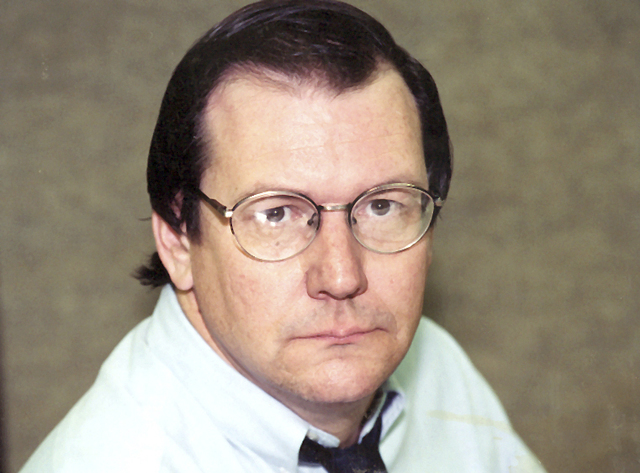Myers: How we stopped listening to all sides
A few days ago I bought a copy of the New York Times, not something I do much anymore. Both the print edition and online access have risen above my price range. But I needed something to read on the bus home, so I ponied up $2.50.
It was the Dec. 19 edition. The main story on the front page was findings by scientists (National Oceanic and Space Administration, Goddard Institute for Space Studies) that “the earth reached its highest temperatures on record in 2016, trouncing a record set only a year earlier, which beat one set in 2014. It is the first time in the modern era of global warming data that temperatures have blown past the previous record three years in a row.” Accompanying the article across the top of the front page was a graph showing the trend from 1880 to 2016. The story was posted online on December 18.
No one else had this story. But by the end of December 19, everyone – including some science publications – was reporting it. That’s how reliable and influential the Times is.
Elsewhere on the front page of my Dec. 19 copy of the Times, there was a story about Maribel Cavero, a woman in the Bronx who was rushing to pick up her niece from school when she was hit by a bullet fired at someone else two blocks away. It was the latest in a year-long series the Times ran on people killed in one police precinct (40) of New York City. All year long the articles had run – 14 different victims. Ms. Cavero was the last, and her story jumped inside where it took up an entire page and three-fifths of a second page.
Also on the front page was a piece, “How to Make a Masterpiece in Fake News: Start With a Lie, then Make it Bigger.” It told how, after Donald Trump said in Columbus, Ohio that “I’m afraid the election is going to be rigged,” a Maryland Republican man invented a news story that was headlined, “BREAKING: ‘Tens of thousands’ of fraudulent Clinton votes found in Ohio warehouse.”
To his dismay, the Times tracked down the man who concocted this lie. His name is Cameron Harris. He posted the “story” on a site he calls ChristianTimesNewspaper.com, a plainly un-Christian site. His story fabricated a “Randall Prince, a Columbus-area electrical worker” who discovered the non-existence ballots. This is one of MANY fake news stories Harris wrote.
Numerous other sites like ConservativeFiringLine and TruthFeed picked up the story (“Christian Times is reporting…”) and posted it on their own sites, where it remains today. A Google search for Ohio’s “Randall Prince” turns up more than 12,000 hits. Fortunately, some of them are fact-checking sites.
These kinds of New York Times stories are the reason so many journalists follow its lead. They are great stories, well researched, well written. Some people consider the Times “liberal,” which it is not. It is establishment and centrist, and those are among its flaws, but that’s important only to people who read only publications that tell them what they want to hear. I read National Review and the London Telegraph because I want to know what conservatives are thinking and what contributions they are bringing to public dialogue. I read William F. Buckley from my high school years to the end of his life. I benefited from it and still do.
Back in 1974, I heard Reno Gazette-Journal editor-publisher Warren Lerude say that when he was growing up, the New York Times was a national institution, admired and honored.
The Nixon administration’s campaign to demonize the press came along, with Vice President Spiro Agnew its face. They wanted people to blame the rooster for the sunrise. What they did was set off a 47-year-long war over news which, when married to today’s polarized politics, made all sides suspect and avoid any voices with which they do not agree.
It is one more way we do not listen to each other, which means we stop learning much.
Dennis Myers is an award-winning journalist who has reported on Nevada’s capital, government and politics for several decades. He has also served as Nevada’s chief deputy secretary of state.

















